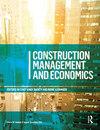如何在建筑行业中展示交易性和转型性安全领导行为
IF 3
Q2 BUSINESS
引用次数: 6
摘要
摘要交易型和转型型安全领导已被反复发现对安全具有重要意义。然而,如何最有效地展示交易型和转型型领导行为,可能取决于背景和行业。采用人种学方法,对澳大利亚11个建筑工地的监督员安全领导力进行了探索。研究结果表明,在建筑工地环境中,主管表现出的偶然奖励、理想化影响和例外行为管理与他们在全面领导理论(FRLT)中的定义密切一致。这三种类型的领导行为反映了对主管积极行动的观察,包括:赞扬工人的良好安全表现;积极预测和关注安全问题;即使在生产压力很大的时候,也始终以安全为榜样。其他理论上描述的领导行为维度,即个人考虑、激励动机和智力刺激,并没有以FRLT中的概念化方式直接反映在观察到的主管行为中。良好的监督与员工关系使员工能够轻松地提出安全问题,创造性地思考如何安全地开展工作,并在遇到个人问题时与上司交谈。这些都是领导力的动机、智力和同理心元素,与主流FRLT中领导力行为的概念化方式并不直接一致。该研究表明,在建筑工地环境中,领导行为可能采取与理论理想类型不同的形式,并且从种族学角度对主管与工人的互动进行深入了解,有助于在实践中理解转型和交易型领导。本文章由计算机程序翻译,如有差异,请以英文原文为准。
How transactional and transformational safety leadership behaviours are demonstrated within the construction industry
Abstract Transactional and transformational safety leadership have been repeatedly found to be important for safety. Yet how transactional and transformational leadership behaviours are most effectively demonstrated can be dependent on the context and industry. Using an ethnographic approach, supervisor safety leadership was explored across eleven construction sites in Australia. The findings revealed that, within the construction site context, contingent reward, idealised influence, and management-by-exception behaviours demonstrated by supervisors closely aligned with their definitions in Full-Range Leadership Theory (FRLT). These three types of leadership behaviour reflect observation of supervisors’ positive actions, which included: praising workers for good safety performance; proactively anticipating and attending to safety issues; and consistently leading-by-example with safety, even at times of significant production pressure. Other theoretically described dimensions of leadership behaviour, i.e. individual consideration, inspirational motivation, and intellectual stimulation, were not directly reflected in observed supervisors’ behaviour in the way they are conceptualised in FRLT. The existence of a good supervisor-worker relationship enabled workers to comfortably raise safety issues, think creatively about how to undertake work safely, and talk to their supervisor if they were experiencing personal problems. These are motivational, intellectual, and empathetic elements of leadership, which do not directly align with the way leadership behaviours are conceptualised in mainstream FRLT. The study suggests that, in the construction worksite context, leadership behaviours may take a form that differs from theoretical ideal types and that ethnographically attained insights into supervisors’ interactions with workers can contribute to understanding transformational and transactional leadership in practical terms.
求助全文
通过发布文献求助,成功后即可免费获取论文全文。
去求助
来源期刊

Construction Management and Economics
BUSINESS-
CiteScore
7.50
自引率
14.70%
发文量
58
期刊介绍:
Construction Management and Economics publishes high-quality original research concerning the management and economics of activity in the construction industry. Our concern is the production of the built environment. We seek to extend the concept of construction beyond on-site production to include a wide range of value-adding activities and involving coalitions of multiple actors, including clients and users, that evolve over time. We embrace the entire range of construction services provided by the architecture/engineering/construction sector, including design, procurement and through-life management. We welcome papers that demonstrate how the range of diverse academic and professional disciplines enable robust and novel theoretical, methodological and/or empirical insights into the world of construction. Ultimately, our aim is to inform and advance academic debates in the various disciplines that converge on the construction sector as a topic of research. While we expect papers to have strong theoretical positioning, we also seek contributions that offer critical, reflexive accounts on practice. Construction Management & Economics now publishes the following article types: -Research Papers -Notes - offering a comment on a previously published paper or report a new idea, empirical finding or approach. -Book Reviews -Letters - terse, scholarly comments on any aspect of interest to our readership. Commentaries -Obituaries - welcome in relation to significant figures in our field.
 求助内容:
求助内容: 应助结果提醒方式:
应助结果提醒方式:


